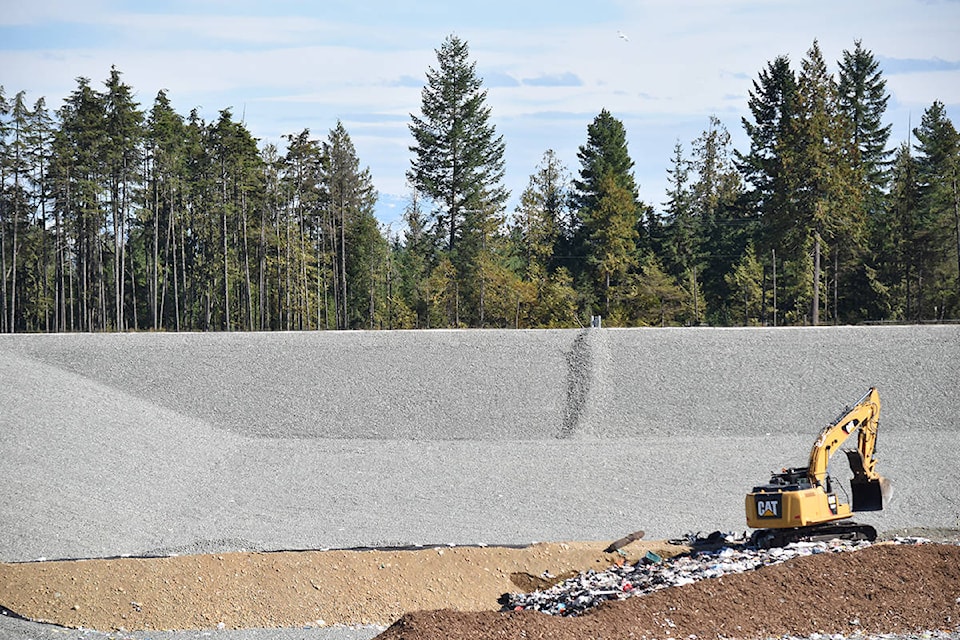After a year or so, the new landfill leachate treatment facility in Cumberland is facing a bit more leachate than expected.
At a previous meeting, Comox Strathcona Waste Management staff presented the board with a report about the first full year of operations at the facility.
One notable finding was that more heavy rain events have meant that the double-lined leachate equalization pond that collects liquid from the landfill has on occasion approached capacity.
These events were observed in January during heavy or extended rainfall. CSWM began to look into short-term and long-term ways to manage the amount of leachate and reduce the risk of leachate being discharged into the environment.
“The intensity of extreme rain events have been greater than what was modeled…. Without additional mitigation measures there is a risk of discharging untreated leachate to the environment during these extreme rain events,” Andrew McGifford, CSWM senior waste manager, told the Comox Valley Record in an email.
RELATED STORY: New engineered landfill opening at Comox Valley Waste Management Centre
RELATED STORY: Debate continues on Waste-to-Energy technology in Comox Valley, Campbell River
As the staff report notes, the landfill is new and in the early stages of filling. With relatively little waste in the new landfill compared with the amount of liquid, leachate is being produced at a faster rate than if the landfill were full.
“A cell full of waste would be like a sponge and slowly release the leachate into the bottom of the cell,” McGifford said.
If the landfill cell cannot hold this leachate, it is then pumped to the equalization pond. This happens when it reaches 0.3 metres, as set out by provincial landfill criteria.
Ultimately, the leachate facility is designed to process the fluid from waste, with the solids being landfilled and liquid being turned to clean water, which is then discharged through an infiltration bed at the site. Prior to the building of the new facility, leachate would go into the ground.
“Leachate would go into ground untreated, and now we treat the water that touches waste,” McGifford said.
On top of concerns about the equalization pond approaching capacity during heavy rain compared with the amount of waste currently in the cell, there is the factor of climate change that might have a future impact on leachate levels.
The whole surface of the cell at the landfill in Cumberland is open, which means there is more of a catchment area exposed to the surface and to precipitation.
The staff report outlines a number of potential measures to handle questions about how much leachate is being generated and how it is being stored.
These include:the provision for tarping off the lower portion of Cell 1 to prevent leachate generation; the creation of temporary storage with tanks or temporary lined ponds to hold leachate until treated; and an increase in the maximum output for leachate treatment facility.
Staff point out these measures can be completed within the 2019-2023 CSWM financial plan. They are bringing a report forward to the board at the meeting scheduled for Nov. 14.
mike.chouinard@comoxvalleyrecord.com
Like us on Facebook and follow us on Twitter.
